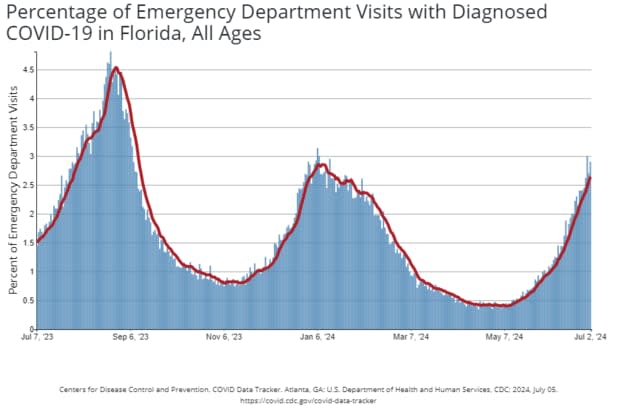:max_bytes(150000):strip_icc()/MelissaNieves-76406d2fc99145e089446602c0cb498d.png)
Eye diseases related to aging such as age-related macular degeneration (AMD), cataracts, glaucoma, and diabetic retinopathy are the leading causes of poor vision and blindness in older adults.
Certain nutrients are crucial for maintaining good eye health. Oxidative stress and damage are believed to contribute to eye diseases. This has led to interest in the potential role of antioxidants and other nutrients as supplements for eye health and the prevention of age-related eye diseases.
This article will discuss the vitamins and minerals essential for eye health and offer recommendations for those who may benefit from supplements.
Getty Images / Momo Productions
Vitamins and Minerals for Eye Health
Risk factors for developing AMD include age, sunlight exposure, smoking, and poor nutrient intake.
Because AMD is partly caused by oxidative stress, some theories suggest that antioxidants can reduce cellular damage in the retina.
Higher dietary intakes of beta carotene, vitamins C and E, and zinc have been linked to a 35% reduced risk of AMD in older individuals. However, subsequent studies have found that antioxidant nutrients and supplements were not effective in preventing AMD.
Some evidence supports the use of supplements to slow the progression of AMD. Most of this evidence comes from the Age-Related Eye Disease Study (AREDS) conducted in the United States. This extensive, randomized clinical trial has resulted in several publications providing data that supports nutrient supplementation in certain cases.
The study protocols used an antioxidant preparation that included several nutrients. The original AREDS formulation included:
The follow-up AREDS study added 10 mg of lutein and 2 mg of zeaxanthin or omega-3 fatty acids and removed beta carotene.
In both studies, participants with moderate AMD in one or both eyes were less likely to progress to advanced AMD.

Beta Carotene
Beta carotene is a source of vitamin A. It is one of a few provitamin A carotenoids that come from plant sources. Beta carotene gets converted to vitamin A in the body.
Good sources of beta carotene in the diet include:
Sweet potatoesSpinachPumpkinCarrotsCantaloupeRed peppers
The original AREDS study found that the formulation reduced the risk of people with intermediate AMD further developing advanced AMD by 25%. The follow-up study found that removing beta carotene from the formulation did not alter the study results.
Beta carotene was removed because it appears to increase the risk of developing lung cancer in smokers. In the follow-up AREDS study, the group that received beta carotene was more likely to develop lung cancer. Most of these participants were former smokers.
However, higher dietary intakes (not from supplements) of vitamins, including beta carotene, were associated with a reduced risk of progression to late AMD.
The data suggest a high dietary intake of foods with beta carotene is helpful. However, remember that more isn’t necessarily better. The evidence does not support the use of beta carotene supplements for the prevention of worsening AMD.
Vitamin C
Vitamin C is a water-soluble vitamin that has antioxidant properties.
Vitamin C is an essential nutrient. The body can not make it on its own; you can only get it through food or supplements. Good sources of vitamin C include:
Bell peppersOrangesOrange juiceKiwiBroccoliStrawberries
The formulation used in the AREDS study included 500 mg of vitamin C.
The dose of vitamin C in the AREDS formulation exceeded the recommended dietary allowance (RDA), or the amount sufficient to meet nutrient requirements. However, it did not exceed the tolerable upper limit, which is the maximum level of total intake that’s safe to consume.
Data on vitamin C for the prevention of cataracts is mixed. The AREDS study did not find that the formulation containing vitamin C prevented or slowed the progression of the cataracts.
Vitamin E
Vitamin E is a soluble vitamin found in some foods, added to foods, or available in supplement form. There are many forms of vitamin E, but alpha-tocopherol is the only one known to meet human requirements.
Vitamin E functions as an antioxidant and has a role in immune function. Good sources of vitamin E include:
Nuts (almonds and peanuts)Seeds (sunflower seeds)Sunflower and safflower oilPeanut butter
Higher dietary intakes of vitamin E have been associated with a 20% risk reduction for developing AMD. However, randomized clinical trials comparing vitamin E supplementation with a placebo (non-therapeutic substance) showed that it did not prevent AMD.
The AREDS study formulation included 400 international units (IU), or 268 mg, of alpha-tocopheryl. The amount of vitamin E in the AREDS formulation (400 IU) far exceeds the daily requirement for vitamin E, but no adverse events were reported with this amount.
Men should speak with their healthcare providers about the vitamin E dose used in the AREDS formula. High-dose vitamin E is controversial because one study found an increased risk of prostate cancer with high-dose vitamin E.
However, the AREDS trial did not find that a high dose of vitamin E increases the risk of prostate cancer. A recent meta-analysis concluded that vitamin E intake did not affect prostate cancer risk.
Vitamin E can also interact with some prescribed medications, so it is important to discuss all medications and supplementation with your primary healthcare provider.
Zinc
Zinc is an essential mineral found in some foods and supplements.
Good sources of zinc include:
Oysters and crabFortified cerealsBeefPorkTurkey
The amount of zinc in the AREDS formulation was 80 mg, which exceeds the tolerable upper limit for zinc. The formulation for the AREDS2 study had a reduced amount of zinc at 25 mg, which had the same protective effect. The National Eye Institute still recommends 80 mg of zinc.
High levels of zinc intake can reduce the amount of copper absorbed by the body. Because the amount of zinc in the AREDS formulation was high, copper was also added to the formulation.
Omega-3s
Omega-3 fatty acids are polyunsaturated fats. Some common omega-3 fatty acids include alpha-linolenic acid (ALA), docosahexaenoic acid (DHA), and eicosapentaenoic acid (EPA).
Good sources of omega-3 fatty acids in the diet include:
Fish (salmon and herring)Seeds (flaxseed and chia seeds)Nuts
Researchers have hypothesized that omega-3 fatty acids may have some protective effects on the retina.
People who eat fatty fish at least once per week have a 53% lower risk of developing AMD, according to one study.
A larger study of women found that those with the highest dietary intake of DHA and EPA had a 38% lower risk of developing AMD. A cohort of the participants in the AREDS trial who reported a higher intake of omega-3 fatty acids were about 30% less likely to develop neovascular AMD.
The AREDS2 trial added omega-3 fatty acids to the formulation in 350 mg DHA and 650 mg EPA. Study results did not show that adding omega-3 fatty acids provided any further benefit.
A separate review also concluded that supplementing omega-3 fatty acids in people with AMD does not reduce the risk of disease progression.
Lutein and Zeaxanthin
Lutein and zeaxanthin are both types of carotenoids related to beta carotene and vitamin A. Both lutein and zeaxanthin are found in the human eye. They are the only two carotenoids present in the macula and the lens.
Good sources of lutein and zeaxanthin in the diet include:
KaleSpinachCabbageBroccoliPeasEggsCorn
The AREDS2 study added 10 mg of lutein and 2 mg of zeaxanthin for the supplement formulation. They found that lutein and zeaxanthin were suitable replacements for beta carotene.
A Word From Verywell
Your body needs fat to absorb lutein, zeaxanthin, beta carotene, and vitamin A. Adding a drizzle of olive oil or sliced avocado to your kale salad will not only enhance flavor but will also aid with the absorption of the nutrients that can help protect eye health.
Who Should Take Eye Health Supplements?
Available evidence suggests that people with intermediate AMD in one or both eyes may see a slowed progression of AMD with antioxidant supplementation (vitamins C, E, and zinc). The benefit appears to be greater for those with intermediate AMD rather than early AMD.
If you are a smoker or have a history of smoking, you should look for an eye health formulation that does not contain beta carotene. Beta carotene was found to increase the risk of developing lung cancer.
Summary
Vitamin C and E, zinc, lutein, and zeaxanthin play important roles in eye health. Most healthy people can meet these nutrient requirements through diet alone. Eating a diet rich in fruits, vegetables, whole grains, and unsaturated fats can help meet these requirements.
The available evidence shows that supplementation of these nutrients does not protect from developing AMD or cataracts but may slow the progression of AMD. If you have intermediate AMD in one or both eyes, supplementation may reduce the risk of advanced AMD and vision loss.
Discuss nutrient supplementation with your primary healthcare provider or a registered dietitian nutritionist (RD or RDN) and review the risks and benefits of adding supplements.









